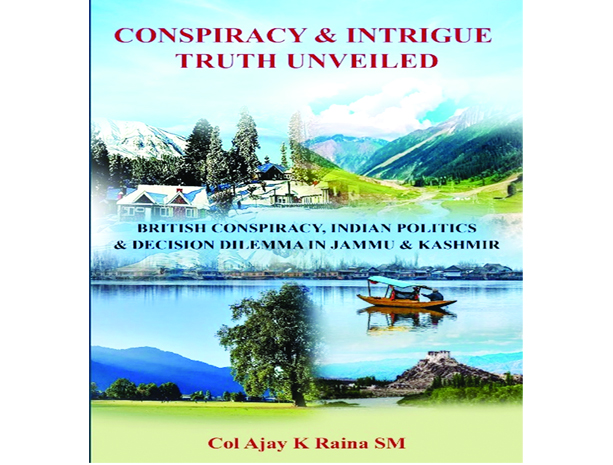Brig Rajendra Singh
‘Conspiracy and Intrigue: Truth Unveiled’, by Col Ajay K Raina, is a narrative-based work that attempts to reveal evidence-based facts related to the developments between the end of February 1947 and mid-August 1947 in a story form. The book addresses three critical issues: the games played by the British, the clutter in the minds of India’s senior politicians and the decision dilemma on the part of the ruler of the Princely State of J&K. It was released in August 2023.
Interestingly, though released after another book by the same author, ‘Battle for Kashmir’, the latest book serves as a prequel to the previous one. When read in combination, the two books complete the story that begins with the landing of Lord Mountbatten in India in the last week of February 1947 and the recapture of Uri by the Indian Army on 14 November 1947. As claimed by the author, the stories from Poonch, Naushera, Jammu, Kishanganga Valley, Gilgit-Baltistan and Ladakh shall be told in due course, but this book will serve as a common prequel to all such stories.
Like its sequel, the book has been written in a narrative form. Many letters, notes, verbal discussions and such communications have been reproduced from the original sources. However, there are no footnotes or end notes, and a bit of imagination has been used to paint the settings at various places to keep the narrative simple and more or less like a typical novel. The book also carries a few important papers as annexures. Even though the author has already written a set of five military history books on the 1947-48 conflict, what sets this work apart from those books is the readability and ease of understanding for those readers who are not too keen to study hardcore military history or those who prefer to read a simplistic version of the past without technical terminology and the army slangs.
The book helps to reinforce/quash quite a few popular lores that have become part of the public belief system, thanks to hearsay and agenda-driven narratives. To cite a few examples: Did MK Gandhi really want Jinnah to form a Muslim-majority government in India? Did the British envisage a few princely states to remain independent after their exit? Was Jinnah okay with Jammu & Kashmir remaining independent? Did Patel offer to swap Hyderabad for Kashmir? Did Sheikh Mohd Abdullah try to offer Kashmir to Jinnah but with certain conditions? Was there actually a provision for Standstill Agreements in the Independence Act? Did Pandit Nehru force Mountbatten to prevail on Radcliff to grant Gurdaspur to India to maintain geographical contiguity with J&K? Was Maharaja Hari Singh bent upon staying independent as the date of the British exit approached? How come Pakistan celebrates its Independence Day on 14 August? And the list goes on. In more than one way, therefore, this book offers a corrective reading of the history as it pertains to pre-independence India in general and Jammu & Kashmir in particular.
A unique feature of the book is the fact that while the content comes across as a story, the bibliography is pretty exhaustive to help readers reach the sources of the information contained between its covers. The author offers to share the specific source(s) in case any research scholar or lay reader so desires. The book and its sequel are highly recommended for those wanting to understand the complex history in a simple language.
Trending Now
E-Paper


